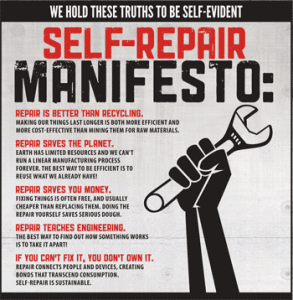 A recent twitter follower asked me the following question: “What is the biggest difference between Agile Marketing and what everyone else does?” It’s a great question.
A recent twitter follower asked me the following question: “What is the biggest difference between Agile Marketing and what everyone else does?” It’s a great question.
Here’s my 124 character response to the question:
Agile Marketing is: focus on the customer, validated learning, short, adaptive iterations and cross-functional collaboration
Focus on the Customer
Traditional marketing focuses on the producer. The four P’s (Price, Place, Promotion, Product) are inward focusing levers, focused on the things that the producer can control. Agile Marketing focuses on the customer and the customer value chain. For example, Robert F. Lauterborn’s Four C’s model, where cost replaces price, convenience replaces place, communication replaces promotion and the customer experience replaces the product is a more appropriate model for Agile Marketing.
Traditional marketing focuses on the producer’s sales cycle; Agile Marketing focuses on the customer’s buying process. Traditional marketing thinks there is a uni-directional sales funnel, and that all customer’s progress down that funnel. Agile Marketing believes that customers are less predictable, and progress towards a buying decision in various unique ways, not always moving neatly down a sales funnel.
Traditional marketing focuses on spin, controlling the message, owning the brand. Agile Marketing focuses on transparency and engagement, and recognizes that ultimately customers own both the message and the brand, and only through honest interaction can the company influence customer perceptions.
Validated Learning
Traditional marketing relies on measurements like Total Addressable Market (TAM), Market Share, Unaided recall of a brand or an ad, gross rating points (GRPs), and target rating points (TRPs). Agile Marketing proceeds via a series of “experiments”, forming a hypothesis of what might work, and testing that hypothesis. Agile Marketing chooses measurements appropriate to the hypothesis at hand, and measurements that align with the business and sales goals of the organization. Traditional marketing is measured in terms of successes and failures; Agile Marketing is measured in terms of the pace of learning.
Traditional marketing treats markets and customers like a lump of clay: if the marketer applies the tools of marketing (advertising, PR, the Four P’s, etc), the marketer can mold the market and the customers into their idea of what the customer and the market “should” be. Agile Marketing treats markets and customers like a complex system of individuals, trying to learn what works for them, and not being surprised when they don’t react in the ways that we expect. Agile Marketing expects and welcomes change; traditional marketing worries about how to accomodate change into their carefully written plans.
Agile Marketing’s emphasis on validated learning also affects how we report measurements. When I was at Microsoft and I practiced traditional marketing, we reported numbers at mid-year and yearly planning sessions. And of course we reported the numbers in such a way that made us look good, that told our story in the best possible light. We weren’t lying, and we weren’t evil, it’s simply the nature of marketers that we’re going to tell the story in this way. With Agile Marketing, we apply the scientific method: we make a hypothesis, and the measurements are there to prove or disprove the hypothesis. We decide on the measurement up front, and report it transparently. Learning about what doesn’t work is just as important as learning about what works.
Short, Adaptive Iterations over Big-Bang Campaigns
Traditional marketing progresses by a series of campaigns. Yearly campaigns, quarterly campaigns, big launches. The emphasis is on the big idea, get it right, and launch it with a big splash.
Agile Marketing proceeds by a series of short sprints, generally 2-4 weeks long. The emphasis is on getting a “good enough” idea out there, testing it, and then perfecting it over time.
Cross-functional Collaboration over Silos
Traditional marketing tends to be organized around internal functions: PR, advertising, product management, online (SEO/SEM), business intelligence. Agile Marketing is more likely to be organized around the customer value cycle (need recognition, information search, evaluation of alternatives, purchase decision, post-purchase behavior). Where possible, different functions sit in the same space, and collaborate together on meeting the customer needs.
What Do You Think?
Was I fair to traditional marketing? Are there other differences that I missed? What say ye?



Jim,
Great article, and really gets across the idea of validated learning. With this approach it really turns the process of marketing on its head, while goals are always the purpose, the process should help you to succeed in reaching those goals.
Jim,
Great article, and really gets across the idea of validated learning. With this approach it really turns the process of marketing on its head, while goals are always the purpose, the process should help you to succeed in reaching those goals.
Thanks, John. It was an interesting question, and as soon as I saw it, I knew I had to write a post answering it.
Thanks, John. It was an interesting question, and as soon as I saw it, I knew I had to write a post answering it.
Jim,
Great post, it summarizes the differences nicely!
One question I still have after reading it, with respect to short iterations, is how to keep iterations short when faced with a long-running project like a split test that requires statistically significant findings. Maybe that’s out of scope for the post, but one barrier I have in making my team more agile is tests that need to be run for several months.
James,
Great question. I’d answer it in two parts. First, I’d shoot for getting enough traffic and implementing changes that make enough of a difference that you’d see a statistically significant difference in the shorter time period of a Sprint. However, I realize that’s not always possible, and some marketing effects always take longer than can be fit in a single sprint.
So the other answer: in Agile Development, many teams don’t ship after every Sprint. They may run 3-4 week Sprints, but ship to customers just once a quarter. The same principle can apply to Agile Marketing. You may have a goal that can only be conclusively measured over several months, but gets included in every Sprint that falls in that time period.
Does that make sense?
Jim
I think that does, and we do something similar. My company works primarily with small businesses, so getting statistically significant results in less than a month is often difficult (even after aggregating across businesses). We also don’t wait for the end of the quarter, we deploy changes whenever they’re ready.
Since I originally come from software development, I think I’m in the habit of tracking work to be done, and I pay less attention to the things going on in the background, so including ongoing tests in the Sprint backlog is a good idea. Thanks!
Jim,
Great post, it summarizes the differences nicely!
One question I still have after reading it, with respect to short iterations, is how to keep iterations short when faced with a long-running project like a split test that requires statistically significant findings. Maybe that’s out of scope for the post, but one barrier I have in making my team more agile is tests that need to be run for several months.
James,
Great question. I’d answer it in two parts. First, I’d shoot for getting enough traffic and implementing changes that make enough of a difference that you’d see a statistically significant difference in the shorter time period of a Sprint. However, I realize that’s not always possible, and some marketing effects always take longer than can be fit in a single sprint.
So the other answer: in Agile Development, many teams don’t ship after every Sprint. They may run 3-4 week Sprints, but ship to customers just once a quarter. The same principle can apply to Agile Marketing. You may have a goal that can only be conclusively measured over several months, but gets included in every Sprint that falls in that time period.
Does that make sense?
Jim
I think that does, and we do something similar. My company works primarily with small businesses, so getting statistically significant results in less than a month is often difficult (even after aggregating across businesses). We also don’t wait for the end of the quarter, we deploy changes whenever they’re ready.
Since I originally come from software development, I think I’m in the habit of tracking work to be done, and I pay less attention to the things going on in the background, so including ongoing tests in the Sprint backlog is a good idea. Thanks!
Pingback: Small Business Marketing Plan | small business magazine, small business ideas, work from home ideas
Pingback: Small Business Marketing Plan | small business magazine, small business ideas, work from home ideas
Pingback: 3 Major Differences between Agile and Traditional Marketing | Conspire: A @Mindjet Publication
Pingback: 3 Major Differences between Agile and Traditional Marketing | Conspire: A @Mindjet Publication
Pingback: 3 Major Differences between Agile and Traditional Marketing « Nineroads
Pingback: 3 Major Differences between Agile and Traditional Marketing « Nineroads